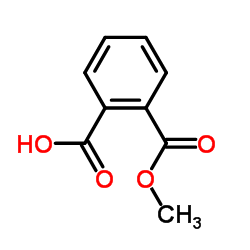Denitrifying degradation of dimethyl phthalate.
Da-Wei Liang, Tong Zhang, Herbert H P Fang
文献索引:Appl. Microbiol. Biotechnol. 74(1) , 221-9, (2007)
全文:HTML全文
摘要
Results of batch experiments on the denitrifying degradation of dimethyl phthalate (DMP) was most favorable at pH 7-9 and 30-35 degrees C. DMP was first degraded to monomethyl phthalate (MMP), which was in turn degraded to phthalate before complete mineralization. There was no fatty acid residue in the mixed liquor throughout the experiments. The maximum specific degradation rates were 0.32 mM/(gVSS x h) for DMP, 0.19 mM/(gVSS x h) for MMP, and 0.14 mM/(gVSS x h) for phthalate. About 86% of available electron in DMP was utilized for denitrification; the remaining 14% was presumable conserved in the new biomass with an estimated yield of 0.17 mg/mg DMP. Based on 16S rDNA analysis, the denitrifying sludge was mainly composed of beta-subdivision and alpha-subdivision of Proteobacteria (33 and 5 clones out of a total of 43 clones, respectively), plus some Acidobacteria. Using a primer set specifically designed to amplify the denitrification nirK gene, 10 operational taxonomy units (OTUs) were recovered from the clone library. They clustered into a group in the alpha-subdivision of Proteobacteria most closely related to denitrifier Bradyrhizobium japonicum USDA110 and several environmental clones.
相关化合物
| 结构式 | 名称/CAS号 | 分子式 | 全部文献 |
|---|---|---|---|
 |
邻苯二甲酸单甲酯
CAS:4376-18-5 |
C9H8O4 |
|
Feasibility of ultra-high performance liquid and gas chromat...
2015-01-01 [Anal. Chim. Acta 853 , 625-36, (2014)] |
|
Monitoring of PAEMs and beta-agonists in urine for a small g...
2014-07-30 [J. Hazard. Mater. 277 , 169-79, (2014)] |
|
Phthalate Metabolites in Urine Samples from School Children ...
2015-08-01 [Arch. Environ. Contam. Toxicol. 69 , 202-7, (2015)] |
|
Detection of phthalate metabolites in human saliva.
2005-11-01 [Arch. Toxicol. 79(11) , 647-52, (2005)] |
|
Phthalate exposure and human semen quality: Results from an ...
2015-10-01 [Environ. Res. 142 , 1-9, (2015)] |